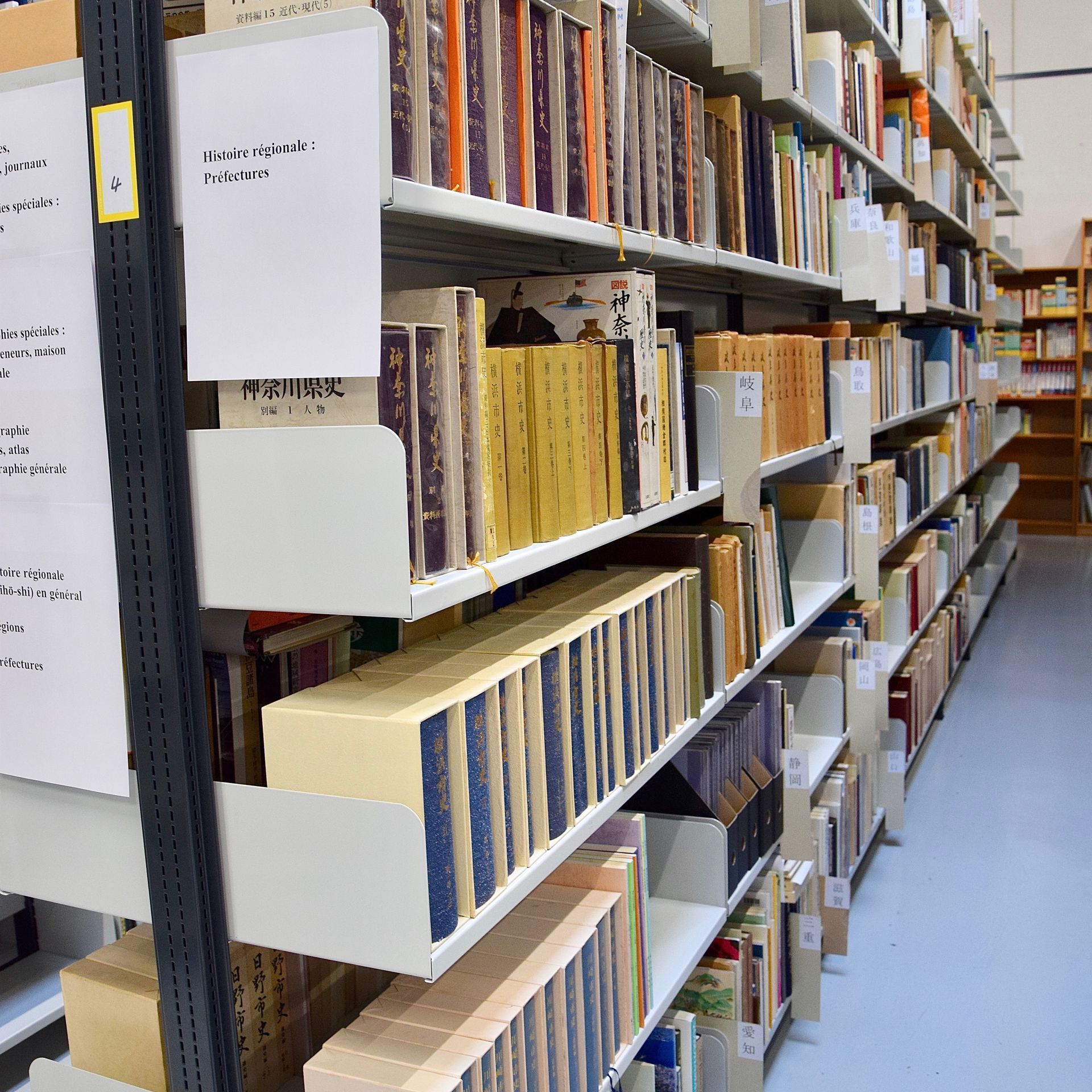Library
The library is conceived as a research and study library. With around 130,000 volumes, it offers a wide range of academic and non-academic material for anyone interested in Japan and its culture. The publications are predominantly in Japanese, but there are also many Japan-related works in English, German, French and other languages.
A particular focus is on extensive holdings on Japanese history in all its forms. This includes a unique collection of regional histories (chihō-shi), but also numerous biographies and a large collection of works on technology and the history of technology.
Also important is a large collection of manuals and reference works in Japanese, French, English and German, which make the library a useful source of information for the general public.
The library is a reference library (materials must remain in the library and are not lent out).
Part of the collection (about 30,000 volumes) is accessible through our online catalogue.
The remaining 100,000 volumes are currently being catalogued. They include the collections donated by Erich Pauer and Regine Mathias and other donors. Below are the main subject areas covered by these volumes.
See the separate webpages for academic journals and special collections.
Main fields covered by remaining 100,000 volumes
Covered fields by the remaining 100,000 volumes of our library:
- Japanese studies, biographies of Japanese scholars, Japanese studies institutions, conference and congress reports, etc.
- Book production, libraries and publishing in Japan
- Bibliographies
- Manuals and encyclopaedias: Japanese, English, other languages, numerous special dictionaries
- Dictionaries: Japanese – other languages
- Japan in general
- Philosophy, intellectual history, religion
- History: East Asia, history of Japan from ancient times to the present, divided into periods, special areas: Second World War (navy, aviation, land forces), Hiroshima, Unit 731, war crimes, prisoners of war, end of the war, colonies and occupied territories, etc.
- Biographies: general, special collections on engineering and entrepreneur biographies; Imperial family
- Environment, fauna, flora, geography, ecology
- Regional studies and local history by regions and prefectures, numerous prefectural, city and village histories, including other economic and socio-political publications
- Politics: domestic politics, political system, foreign policy, administration, parties, security policy, etc.
- International relations, partly organized by country
- Law: legal history; constitutional history; law (divided into areas of law)
- Society: sociology, including social history, population, urban/rural, family, gender, health, etc.
- Work, especially the labour movement, trade unions, employment system, working conditions, etc.
- Education: preschool education, educational system, teaching materials, school and university histories
- Ethnology/social anthropology
- Economics, including economic history by period; monetary, currency, finance and taxation, etc.
- Agriculture: including forestry, fishing, hunting
- Industry and technology and traditional crafts: technology and the history of technology divided into sectors, industrial heritage
- Trade, transport, traffic, communication
- Banking and stock exchange
- Insurance, real estate, tourism
- Business administration, management, companies
- Company histories by industry
- Natural sciences, including medical history, psychology, mathematics, etc.
- Arts: visual arts, performing arts, film, photography, theatre, etc.
- Exhibition catalogues, literature on museums, etc.
- Language
- Literature







